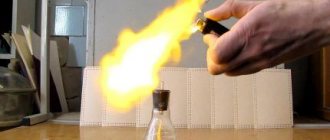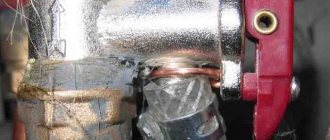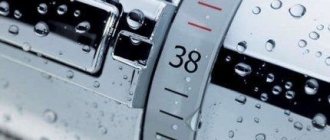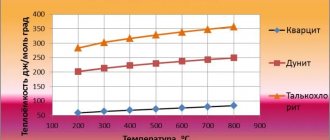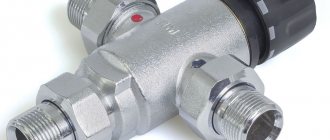A solar collector is a technical device used to convert solar energy into thermal energy. According to the type of coolant, solar collectors are divided into air and liquid, in which the coolant is water or another liquid substance (antifreeze, ethylene glycol, etc.). By design, these devices are either flat or vacuum.
Solar collector - what is it, device, principle of operation
Climate control equipment that directly converts the energy of sunlight into heat is called a solar collector in technical terminology. The device does not generate electricity like a classic solar battery, but only collects, concentrates and transfers heat to the heating system. The coolant is water, non-freezing liquid or air.
Based on their design characteristics and associated operating principles, solar collectors used for heating a house, including in winter, are divided into 3 main types - flat, vacuum and air. Structurally, the device is a set of series-connected coil-shaped tubes connected to the supply and return lines. A coolant circulates inside them - water, antifreeze or air.
Solar collector as part of a heating scheme for a private house Source ast75.ru
Any model of a vacuum manifold contains the following set of main components:
- External large transparent pipe without air.
- An internal small tube within which coolant circulates.
- A collector-distributor with connected large pipes, inside of which there are pipes of smaller diameter.
Schematically, this design is an analogue of a transparent thermos with maximum thermal insulation. Thanks to this, the small tubes warm up well and transfer heat to the coolant circulating inside them.
The principle of operation of the collector is based on the natural laws of changes in the properties of substances under the influence of temperature - the driving force that forces the coolant to circulate inside the tube system are natural processes such as changes in the density of the substance, convection, compression-expansion, etc.
Schematic design of a vacuum manifold Source avanten.ru
In this case, to enhance the intensity of absorption of thermal energy from the sun, special adsorbents are used, for example, metal plates with a blackened coating. Conversely, to maximize the passage of sunlight, the upper part of the installation is made of a material with high light transmittance.
Application
Installing a solar collector to meet the needs of a private home allows you to solve not only heating problems, but also an additional number of issues:
- Production of domestic hot water - for showering, bathing, washing, cleaning, washing dishes.
- Maintaining pool operating standards.
- Heating of greenhouses, greenhouses, greenhouses.
- Creation of an alternative standby heating system in case of an emergency.
- Optimization, reduction of costs for the operation of a traditional heating system.
- Preparation of technical hot water.
The solar collector can be used to heat water in a swimming pool Source 4pool.com.ua
Note ! The efficiency of the solar collector is so high that it can be used to heat a house even in winter - but only if a vacuum type model is installed. This is explained primarily by the design features of the equipment and the specifics of their operation in cold conditions. Unlike flat analogues, its tubes are not covered with snow, the material is strong enough to withstand even large hail, and the device, based on the principle of a thermos, allows you to bring the water inside to a boil in severe frost outside.
See also: Catalog of companies that specialize in engineering systems (heating, water supply, sewerage and others) and related work
Benefits of use
Correctly selected in accordance with the individual characteristics of the house and taking into account the climatic zone of its location, the solar collector for heating the house will last a long time and will reduce the cost of paying for coolants such as gas and electricity.
Modern solar systems are distinguished by their reliability and uninterrupted operation. They can significantly reduce the load experienced by the heating system in a private home.
- Heating systems powered by solar energy are affordable and environmentally friendly devices.
- During their operation, no toxic substances are released, making them the most environmentally friendly heating devices.
- They are completely silent in operation and have a simple and understandable design.
- A solar collector for heating water is especially indispensable in the summer, when it is necessary to heat water in the shower or in the pool.
In turn, during the off-season, such heating devices completely replace electric heaters, which most people use before the start of the heating season.
In the absence of cold weather, the energy generated by solar collectors is quite sufficient to maintain the temperature in the house at normal levels.
It is noteworthy that to install such high-tech devices at home, you do not need to obtain any permits. The only recommendation from solar collector manufacturers is to avoid the option of installing the system yourself.
The installation process will require some knowledge and experience in the field of electrical and plumbing equipment. Therefore, it is better to entrust such a responsible task to qualified specialists.
Advantages and disadvantages
Depending on the design of the solar collector equipment, the heating system has a certain number of pros and cons. Thus, the advantages of flat varieties are manifested in the following:
- The most favorable ratio of “equipment price – heat production” is for regions with a temperate climate.
- Full autonomy of heating and hot water production.
- Maximum efficiency during the period of highest solar activity in comparison with solar panels and wind generators.
- Independence from standard energy resources and the constant rise in prices for them.
A solar collector on your site can be used to heat greenhouses and heat water for irrigation Source teplo.guru
- The average payback period is 3-5 years.
- Service life - at least 30 years.
- Self-cleaning function from snow and hail.
- Easy connection to the heating system.
- Absolutely harmless to the environment.
A flat-plate solar collector used to heat the heating fluid is not without some disadvantages:
- High cost of equipment, the need for installation costs and implementation in the heating system.
- The presence of sailing characteristics of the device, which creates the possibility of damage in strong winds.
- Low efficiency in cloudy weather, as well as during cold weather.
- Large heat losses due to imperfect design.
Vacuum varieties differ from flat ones for the better in terms of performance, as well as due to the following positive features:
- Wide operating temperature range, including cold temperatures down to -30-500C.
- Minimum windage parameters and likelihood of wind damage.
- Enhanced performance capabilities due to the ability to absorb radiation from the invisible part of the sunlight spectrum.
- Minor heat loss from the housing.
The more working panels the collector system has, the more efficient the heating system will be Source stroy-podskazka.ru
- High reliability in operation.
- Maintainability - in the event of a malfunction, it is necessary to replace one or more working elements, and not the entire structure.
- Possibility of heating the coolant up to 3000C.
- Insensitive design to precipitation.
The negative properties of vacuum models are associated primarily with the high cost of equipment and strict installation requirements.
Important! The efficiency of solar collectors depends not only on the weather, but also on installation conditions, landscape topography and the duration of sunshine. All these factors significantly affect the payback time.
Price
High-quality solar collectors that will convert solar energy into thermal energy even in 20 degree frost are expensive. In addition, such devices must be installed correctly.
The price of some sets of this equipment with installation can be more than 500,000 rubles. These investments will begin to bring “profit” within a few years, i.e. 5-6 years after the installation of solar cells, they will allow you to save money during this period equal to what was spent on the purchase and installation of equipment.
You can purchase inexpensive sets of solar collectors, the price of which starts from 20,000 rubles. Such devices are often not even equipped with a transparent cover, which makes them impossible to use at subzero air temperatures.
Varieties
Modern solar collectors come in water and air types. The former use water, antifreeze or other liquid with suitable properties as a coolant. Circulating through the internal tubes, it transfers heat to the heat exchanger of the heating system. Inside the air modification, the air flow is heated in a similar way, which is then supplied for heating needs.
Schematic design of a flat solar collector Source tildacdn.com
Additional costs associated with operation
Using this does not imply any care or maintenance other than periodic cleaning of dirt and snow in winter (unless it thaws itself). However, there will be some associated costs:
- Repairs, everything that can be changed under warranty can be replaced by the manufacturer without any problems, it is important to buy an official dealer and have warranty documents.
- Electricity, very little of it is spent on the pump and controller. For the first one, you can install only 1 solar panel of 300 W and it will be quite enough (even without a battery system).
- Washing the coils will need to be done once every 5-7 years. It all depends on the quality of the water (if it is used as a coolant).
Video description
Video review of using a vacuum solar collector in your home:
- Due to the simplicity of the device, air modifications last longer and do not require special maintenance. Their main drawback is insufficient heat production during the cold season.
- The amount of heat generated by a vacuum device directly depends on the size of the tubes. Models with several tubes, with a length of at least 2 m and a diameter of 6 cm or more, are considered optimal.
- The equipment power indicator characterizes the amount of heat generated, expressed in kW, provided that the sun is at its zenith and there is complete cloudlessness.
On a note! The solar collector only works effectively during the day. To maintain heat in the room at night, it is necessary to install a heat accumulator. During the day it will accumulate heat and release it at night.
We equip housing correctly
To preserve heat in the house, you should pay attention to the choice of interior doors. Where can you buy interior doors so that you don’t regret your purchase for a minute? How to protect yourself from possible counterfeits and unscrupulous manufacturers? What to do if you are ready to invest a sufficient amount of money to buy interior doors, but are not inclined to trust specialists with low qualifications? The conclusion in this case is simple - turn to the services of a company that sells a wide range of models of interior doors, represented by various design solutions and manufacturers. Our range is constantly expanding and updating, and the high qualifications of our staff are beyond doubt.
In our store you can always find interior doors designed in line with the main trends of traditional classics or corresponding to one of the many trends in modern interior design. Each product is not only equipped with reliable, functional and effective fittings, but also has a certificate of quality compliance with the main existing standards. By purchasing interior doors from us, you thereby give preference to absolutely harmless products made from environmentally friendly raw materials.
Video description
Video example of the applied use of a solar collector for a country house:
- The light-absorbing panel should not be subject to shadows from nearby objects - houses, trees, pipes, fences, etc.
- When placing the device on the roof of a house, it is necessary to design a mount for it in advance.
- To avoid the accumulation of precipitation on the work surface, the device must be installed as close to a vertical plane as possible, but with minimal damage to capture sunlight.
- For optimal operation throughout the year, the device must be installed on the south side with an angle equal to the latitude of the area.
Reference! It will not be possible to create a completely autonomous heating system based on a solar collector. Since to ensure maximum efficiency, the circuit will need to be equipped with a circulation pump, automation and other equipment that runs on electricity. However, significantly reducing the consumption of the main energy resource - gas, electricity, coal - with its help is a completely feasible task.
Structural drawings
Let's get started
Before building a solar collector, it is necessary to make the appropriate calculations and determine how much energy it should produce. But you shouldn’t expect high efficiency from a homemade installation. Having determined that there will be enough of it, you can begin.
The work can be divided into several main stages:
- Make a box
- Make a radiator or heat exchanger
- Make a front camera and storage device
- Assemble the collector
To make a box for a solar collector with your own hands, you should prepare an edged board 25-35 mm thick and 100-130 mm wide. Its bottom should be made of textolite, equipped with ribs. It should also be well insulated using polystyrene foam (but preference is given to mineral wool), covered with a galvanized sheet.
4 more effective ways to alternatively heat your home
Which you can learn about in our next article.
Having prepared the box, it’s time to make the heat exchanger. You should follow the instructions:
- It is necessary to prepare 15 thin-walled metal tubes 160 cm long and two inch pipes 70 cm long
- In both thickened tubes, holes are drilled with the diameter of the smaller tubes into which they will be installed. In this case, you need to ensure that they are coaxial on one side, the maximum step between them is 4.5 cm
- The next stage is that all the tubes need to be assembled into a single structure and welded securely
- The heat exchanger is mounted on a galvanized sheet (previously attached to the box) and fixed with steel clamps (metal clamps can be made)
- It is recommended to paint the bottom of the box in a dark color (for example, black) - it will better absorb solar heat, but to reduce heat loss, the external elements are painted white
- To complete the installation of the collector, it is necessary to install a cover glass near the walls, while not forgetting about reliable sealing of the joints
- A distance of 10-12 mm is left between the tubes and the glass
All that remains is to build a storage tank for the solar collector. Its role can be played by a sealed container, the volume of which varies about 150-400 l
. If you cannot find one such barrel, you can weld several small ones together.
Like the collector, the storage tank is thoroughly insulated from heat loss. All that remains is to make a fore-chamber - a small vessel with a volume of 35-40 liters. It must be equipped with a water-falling device (a swivel valve).
The most responsible and important stage remains - to assemble the collector together. You can do it this way:
- First you need to install the front camera and storage. It is necessary to ensure that the liquid level in the latter is 0.8 m lower than in the front chamber. Since a lot of water can accumulate in such devices, it is necessary to think about how they will be reliably shut off
- The collector is placed on the roof of the house. Based on practice, it is recommended to do this on the south side, tilting the installation at an angle of 35-40 degrees to the horizontal
- But you need to take into account that the distance between the storage tank and the heat exchanger should not exceed 0.5-0.7 m, otherwise the losses will be too significant
- At the end, the following sequence should be obtained: the front camera must be located above the drive, the latter - above the collector
The most important stage is coming - it is necessary to connect all the components together and connect the water supply network to the finished system. To do this, you will need to visit a plumbing store and purchase the necessary fittings, adapters, sockets and other shut-off valves. It is recommended to connect high-pressure sections with a pipe with a diameter of 0.5 inches, low-pressure sections with a diameter of 1 inch.
Commissioning is carried out as follows:
- The unit is filled with water through the bottom drainage hole
- The anterior chamber is connected and the fluid levels are adjusted
- It is necessary to walk along the system and check that there are no leaks
- Everything is ready for everyday use
Briefly about the main thing
A solar collector is a climatic device for collecting and transferring heat from solar energy to the coolant of a heating system. Devices of this type are liquid and air, flat and vacuum. The general scheme of their operation is that the coolant located in the internal tubes is heated by the heat of sunlight, and then enters the heat exchanger and transfers energy to heating or hot water supply.
The thermal collector can be used for various purposes - heating water for domestic needs, heating a house, greenhouses and utility rooms, maintaining the thermal regime of tanks, creating an alternative heating system, reducing the costs of the main heating system. The advantages of the equipment are profitable heat production, independence from external energy sources, high efficiency, quick payback, durability, operation in cold weather, harmlessness. Disadvantages - high cost of equipment and installation, possibility of damage by wind, probability of heat loss.
Solar collectors are classified according to a number of criteria:
- The structures are flat, vacuum.
- Coolant heating level – low, medium and high temperature.
- Method of application - active and passive.
- Heat transfer scheme - direct and indirect.
It is necessary to select and install equipment based on special rules, recommendations and specific conditions of use.
Ratings 0
Operating principle
All types of solar collectors can be used to heat a residential building or other facility, but the principle of their operation, regardless of the design and type of coolant, is the same.
The principle of operation of a solar collector is based on the ability of materials to absorb the energy of the sun in visible and invisible ranges to the human eye, and therefore, within a given material, physical processes begin, molecules begin to move faster, the material (substance) heats up. The heat generated by materials exposed to the sun's rays is transferred to the coolant for subsequent use.
Method for increasing productivity
Usually, after experimenting with a small number of solar modules, private home owners go further and improve the system in various ways.
The easiest way is to increase the number of modules involved, accordingly, attract additional space to accommodate them and purchase more powerful related equipment
What to do if there is a shortage of free space? Here are some recommendations for increasing the efficiency of a solar station (with photocells or collectors):
- Changing the orientation of modules. Moving elements relative to the position of the sun. Simply put, installing the bulk of the panels on the south side. During long daylight hours, it is also optimal to use surfaces facing east and west.
- Tilt angle adjustment. The manufacturer usually indicates which angle is most preferable (for example, 45º), but sometimes during installation it is necessary to make adjustments taking into account geographic latitude.
- Correct choice of installation location. The roof is suitable because it is most often the highest plane and is not obscured by other objects (for example, garden trees). But there are even more suitable areas - rotating sun tracking devices.
When the elements are positioned perpendicular to the rays of the sun, the system works more efficiently, but on a stable surface (for example, a roof) this is only possible for a short period of time. To increase this, practical tracking devices have been invented.
Tracking mechanisms are dynamic platforms that rotate with their planes following the sun. Thanks to them, generator productivity increases by about 35-40% in summer, and by 10-12% in winter.
The big disadvantage of tracking devices is their high cost. In some cases, it does not pay off, so there is no point in investing in useless mechanisms.
It is estimated that 8 panels is the minimum number at which the costs will be justified over time. You can use 3-4 modules, but under one condition: if they are directly connected to the water pump, bypassing the batteries.
Just the other day, Tesla Motors announced the creation of a new type of roof - with integrated solar panels. Elon Musk said that the modified roof will be cheaper than a conventional roof with collectors or modules installed on it.
Real heating methods
As you understand from the above, it is quite difficult (and expensive) to implement full-fledged electric heating of a house with solar panels. Not every owner will decide to buy and install panels on an area of 100–150 m² in order to warm up a small house or cottage. This means that the circuit of electric boiler + water system + heating radiators is eliminated.
But the idea of heating with solar modules still cannot be called a utopia. We list the options implemented by homeowners in practice:
- panels plus inverter air conditioners with a COP efficiency of 3.5–4;
- connecting batteries directly to electric heaters without an inverter;
- construction of a full-fledged solar power plant, sale of electricity to the state, the proceeds go to pay for traditional heating.
Addition. There is no point in discussing the use of panels as additional energy sources for main heating - this is an obvious solution.
Let's start with the third option, which is of interest to entrepreneurs. In countries where the state has established a so-called feed-in tariff, the homeowner can receive electricity from renewable sources and feed it into the general energy grid, making a profit. That is, the homeowner purchases the same 200–300 solar panels, but sells the energy at a good price, rather than wasting it in vain.
Coolants for solar systems
The main coolant for heating systems is water. However, its use in solar systems is limited by the crystallization temperature of 0°C, which means the use of water as a coolant is limited to climatic zones where there are no negative temperatures. In addition, the salts contained in the water clog the heating surfaces with scale, and the corrosive agent - oxygen - damages the metal parts of heating systems and contributes to the decomposition of the coolant into its component elements. Therefore, a type of coolant was developed for solar systems that is devoid of the above disadvantages.
The basis of this coolant is propylene glycol mixed with water that has undergone water treatment in the form of demineralization.
In addition, to reduce the corrosive and decomposing effects of oxygen, antioxidant additives are added to the coolant, the formation of gas bubbles in the liquid is reduced by the addition of defoamers, and stabilizers added to the coolant help keep the solution chemically homogeneous. As a rule, coolants for solar systems are sold ready-made. The concentration of propylene glycogel in them is 40% and higher, which corresponds to a crystallization temperature of -30°C and lower. The acid-base balance (pH) for the finished coolant is maintained in the alkaline zone (≥ 7.0) to reduce the corrosive effect.
When using solar system coolants, you should not mix coolants from different manufacturers, since compositions that are different in both quantitative and qualitative properties can enter into a chemical reaction, rendering the solar system unusable.
Solar energy in the conditions of the current energy and economic crisis is one of the most promising areas of technology aimed at preserving the irreplaceable resources of our planet.
What should the heat collector be like?
The heat collector is another very important working element of the vacuum manifold. Through this unit, accumulated heat is transferred from the tubes to the coolant.
The heat collector is located at the top of the device. One of its components, a copper core, receives energy and transfers it to the main coolant circulating in a closed tank-collector heat exchanger system.
Correct operation is guaranteed by a circulation pump connected to the system. The automation that controls the heating complex clearly monitors the temperature level in the channels and, if it falls below the permissible critical minimum (for example, at night), stops the pump.
This allows you to avoid backheating, when the coolant begins to take away the heat of the hot water collected in the storage tank.
Temperature division of water heating equipment
The consumer is offered a lot of different device options, but their main difference lies in the temperatures they achieve. According to this principle, they are made into three main types of collectors:
- The first is low temperatures (they give low temperatures up to 50 degrees Celsius); the main calculation of application is heating a pool or other options when there is no need to heat the water very much.
- Next come medium temperature collectors (they raise the temperature from 50 to 80 degrees) the main calculation of the application is for heating industrial buildings and residential premises.
Medium temperature collectors are used for heating industrial buildings and residential premises.
- The third type is high temperature collectors (used in industry to generate electricity with subsequent distribution to the central electrical network).
Do-it-yourself assembly of the unit
The process of assembling a vacuum manifold begins with the manufacture of a support frame for the working elements. It is installed immediately in the place allocated for the unit.
The size and dimensions of the frame depend entirely on the model that is planned to be made, and are usually prescribed in the instructions found among the accompanying documents for the components.
The finished frame for the collector is fixed to the roof so that it occupies a clear position and does not swing. If the roof of the building is slate, use sheathing beams and large-caliber thick screws. For other roofing materials, conventional anchors are used
I additionally fix the places where the frame meets the roof surface with sealant so that in the future water does not enter the house through the holes. Then the storage tank is delivered to the installation site and secured with screws to the top of the frame.
At the next stage, the heating element, temperature sensor and automated air outlet are assembled. All auxiliary components and related parts are placed on the included softening pads. To attach the temperature sensor, use a socket wrench.
Next, the supply of water supply communications is arranged. For this purpose, pipes are taken from any material that is resistant to low temperatures and can withstand up to 95°C. Polypropylene pipes and fittings have proven themselves well.
Polypropylene pipes are ideal for connecting the solar collector to the residential plumbing system. The reinforcement has good physical properties and operational endurance, serves reliably for many years and is easily replaced in case of cracks or tears.
Having connected the water supply, the storage tank is filled with water and tested for leaks. If leaks are found somewhere within 3-4 hours, they are repaired.
At the end, heating elements are installed. To do this, the copper tube is wrapped in aluminum sheet and placed in a glass vacuum tube. From below, a fixing cup and a boot made of durable, flexible rubber are placed on the flask.
The upper copper tip of the tube is pushed all the way into the brass condenser. Viscous thermal contact grease is not removed from the pipes. Snap the locking mechanism onto the bracket and mount all remaining glass tubes using the same principle.
Tubular solar collectors require regular maintenance and mandatory cleaning, especially during periods of active snowfall. If you follow these simple rules, they will work for a long time and maintain a high level of efficiency throughout their entire service life.
A mounting block is placed on the structure, a 220-volt power supply is supplied to it, and three auxiliary units are connected to the system - a heating element, an air vent and a temperature sensor.
The last thing to connect is a controller designed to correctly control the complex. The desired operating parameters are entered into the controller menu and the system starts in standard mode.
Step-by-step instructions for constructing a solar collector are given in this article.
Installation Tips
Several recommendations will help increase the performance of the heating collector:
- It is better to install the box with the radiator not rigidly, but with the ability to rotate around a horizontal axis. This will make it possible to position it at right angles to the direction of the sun’s rays throughout the season. In this case, the piping is performed with a flexible liner.
- To bleed air, valves should be inserted into the lower part of the circuit.
- Hot water pipes must be insulated.
- At night, the access of water to the tank should be shut off to avoid heat loss.
Don’t forget to install a valve at the inlet to the front chamber (in front of the float valve). When cold weather sets in, it will need to be shut off and the system drained.

